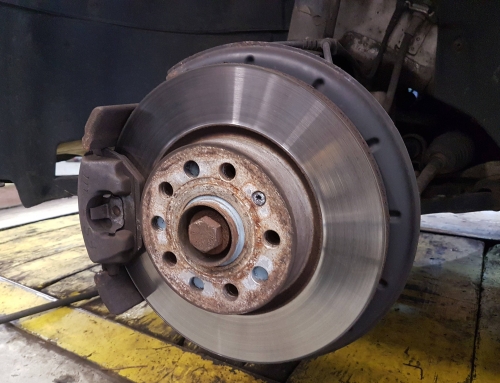Contents
- 1 Understanding the Importance of Regular Oil Changes
- 2 Why Oil Changes Are Essential for Engine Health
- 3 Consult Your Owner’s Manual First
- 4 Driving Conditions Can Affect Oil Change Frequency
- 5 Benefits of More Frequent Oil Changes
- 6 Drawbacks of Changing Oil Too Frequently
- 7 How Oil Change Intervals Have Changed Over Time
- 8 Considering Oil Change Discounts and Promotions
- 9 Consult an Expert to Find the Right Interval for You
- 10 Final Thoughts: Do More Frequent Oil Changes Help Your Car?
Understanding the Importance of Regular Oil Changes
One of the most well-known advice for car owners is to keep up with regular oil changes to maintain their vehicle’s health. However, more clarity about how frequently these oil changes should occur is needed. Some believe frequent oil changes can help extend a car’s lifespan, while others suggest that modern engines and oil technology reduce the need for regular maintenance. So, should you change your oil more often for a longer-lasting vehicle?
Why Oil Changes Are Essential for Engine Health
Oil is essential for ensuring your engine operates efficiently. It lubricates the engine’s components, reduces friction, and helps prevent overheating. Over time, however, oil collects dirt, debris, and other contaminants that reduce efficiency. Regular oil changes remove these particulates, protecting the engine from unnecessary wear and tear. But just how often is “regular”?
Consult Your Owner’s Manual First
Your vehicle’s owner’s manual should be your primary guide when deciding on the correct oil change frequency. Vehicle manufacturers test and determine the best maintenance intervals, which are tailored to each specific make and model. By following these guidelines, you’re ensuring that you’re maintaining the car as its engineers intended. However, individual driving habits and environmental factors can sometimes influence these recommendations.
Driving Conditions Can Affect Oil Change Frequency
Your driving conditions may require more frequent oil changes than what’s stated in the manual. For example, your engine may endure more stress if you live in an area with extreme temperatures or heavy traffic, like a scorching, dry climate. In hotter and drier areas, such as Arizona, engines run hotter, and oil can degrade faster, potentially necessitating more frequent oil changes to maintain peak performance.
Benefits of More Frequent Oil Changes
One clear advantage of more frequent oil changes is the reduction of harmful particulates in your engine. Regularly changing oil helps maintain its purity, allowing it to lubricate more effectively. Cleaner oil can reduce engine wear, boost fuel efficiency, and support a smoother, quieter engine. Many car owners also feel peace of mind knowing that their engine is getting the best care possible.
Moreover, regular oil changes can help detect potential issues early on. During an oil change, a technician may inspect other aspects of your vehicle and identify problems before they become costly repairs. This proactive approach can further extend the life of your car, making it a smart strategy for anyone looking to maximize vehicle longevity.
Drawbacks of Changing Oil Too Frequently
While there are clear advantages to regular oil changes, overdoing it can have its downsides. Changing oil more often than necessary increases maintenance costs and can impact the environment. Excessive oil waste contributes to environmental pollution, mainly if the used oil isn’t disposed of properly.
In recent years, advancements in motor oil technology have allowed for longer oil life. Many high-quality synthetic oils can last up to 7,500 or even 10,000 miles between changes. By following your car’s recommended intervals, you can save money and reduce environmental impact while providing adequate engine protection.
How Oil Change Intervals Have Changed Over Time
Previously, a standard rule was to change your oil every 3,000 miles. This was mainly due to the limitations of older oil formulas and engine technologies. However, modern engines are built to higher tolerances, and synthetic oils are designed to perform longer, reducing the need for frequent changes. Many vehicles today can safely go between 5,000 and 10,000 miles on a single oil change, depending on the driving conditions and soil type.
Considering Oil Change Discounts and Promotions
If you prefer the reassurance of more frequent oil changes, look for discounts or promotions to help save on maintenance costs. Many auto service centers offer regular deals on oil changes, allowing you to maintain your car without overspending. Being aware of these deals can assist you in managing expenses alongside how often your vehicle is serviced, making sure it gets high-quality maintenance without overspending.
Consult an Expert to Find the Right Interval for You
If you’re still uncertain about how often you should change your oil, consult a trusted automotive expert. Service advisors and technicians can assess your driving habits, environment, and the type of oil used to help you make an informed decision. Expert guidance ensures that your oil change intervals match your vehicle’s needs without unnecessary expenses.
Final Thoughts: Do More Frequent Oil Changes Help Your Car?
In summary, more frequent oil changes can provide benefits, especially in harsher climates or challenging driving conditions. However, with advancements in oil technology and engine efficiency, many vehicles no longer require the old 3,000-mile rule. Consulting your owner’s manual and discussing your options with a professional can help you determine the best maintenance schedule for your car.
It’s essential to achieve a balance promoting engine well-being while considering expenses and the environmental effect. Understanding your car’s unique needs will ensure it runs smoothly for years to come.






